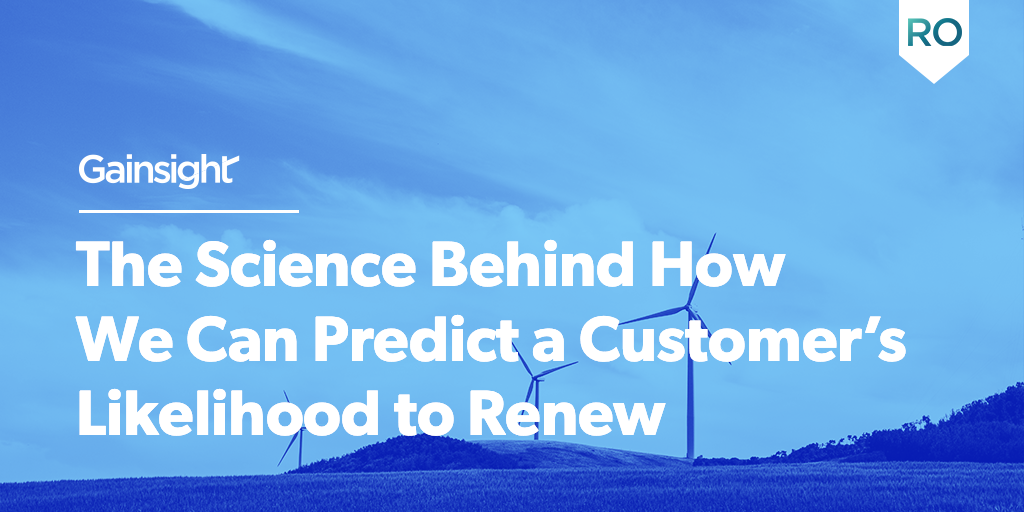This post was co-authored by Priyanka Srinivasan.
It’s basically the holy grail of subscription business: how can you accurately and scientifically predict whether a customer is going to renew or not?
Seeing the future of your revenue base gives you the ability to better forecast your financials, take action on risky renewals, and—you probably don’t need me to convince you how incredibly gamechanging it would be to pull up a dashboard with a clear likelihood-to-renew score.
But could you really trust such a score?
Gainsight recently unveiled our Renewal Center—the incredible dashboard that’s the centerpiece of our Revenue Optimization platform, Gainsight RO. Here’s what it looks like:

Since we started showing people the software, one of the most frequently asked questions we started getting was regarding the predictive Likelihood-to-Renew score. How is it calculated? Does it really utilize machine learning capabilities? How accurate is it?
Instead of taking it on faith that it works, we wanted to explain in more detail the science behind the Likelihood-to-Renew score.
Renewal Center Learns Over Time
In a nutshell, our predictions are powered by a learning framework that continually learns from past outcomes and updates the predictions. Within Renewal Center, we will initialize a set of predictions at T0 for each customer that captures the current understanding of renewal rates by segment. Every month, we learn from recent outcomes (renewals, upsells, and downsells) and update the predictions. The more data we get, as time passes, the more accurate the predictions will become.
We’ve implemented a recursive Bayesian approach that continually updates itself based on the patterns we find in the past won and lost renewals. The score will capture the following aspects of opportunity health that are uniquely available in Gainsight to segregate healthy opportunities from unhealthy ones.
Three Aspects of Opportunity Health
- Health Score: Captures the health of a customer as determined by you.
- CS Engagement Score: Captures the effect of customer success activities you implemented for the account.
- Segment/ARR: Captures the fact that high-touch/low-touch and big/small clients are fundamentally different in nature.
CS Engagement Score Explained
Our CS Engagement score correlates account health with the CS actions taken. The following variables will be compared against historical close rates to compute the CS engagement score:
- Number of Success Plans
- Number of successfully closed CTAs
- Number of Timeline posts
- Number of Outreaches
*This score will not be surfaced directly to the end user, but will be a key intermediary variable used by the model.
Based on each of the above aspects of health, we will update the probabilities based on the outcomes in that month in a statistically accurate manner, as determined by our Bayesian framework.
Improving Statistical Accuracy
By statistically meaningful updations, we get the following advantages:
- Appropriate adjustments will be made depending on how many accounts were due for renewal in the week, and how many closed—the higher the numbers, the greater the weight.
- Recency is given due importance.
- We make sure edge cases are handled appropriately (e.g. if all the accounts in a week renew, we make sure we do not overcompensate).
For revenue projections, we will implement a very similar framework, but we will look at historic revenue conversion rates instead of opportunity close rates. Since this prediction is built bottom-up, we will be able to give the forecasted revenue for the specific portfolio for all users.
Once we gather data on the paths that healthy and unhealthy opportunities take on the route to closure, we will soon augment the model to capture healthy opportunity traversal patterns and update the predictions accordingly.
It’s hard to put into words how excited and proud we are of this new technology. We love showing it off and answering questions, and we’d love to show it to you! If you want to see it in action and get all your questions answered, the best way is to schedule a quick, free demo. Click here to schedule yours today!

